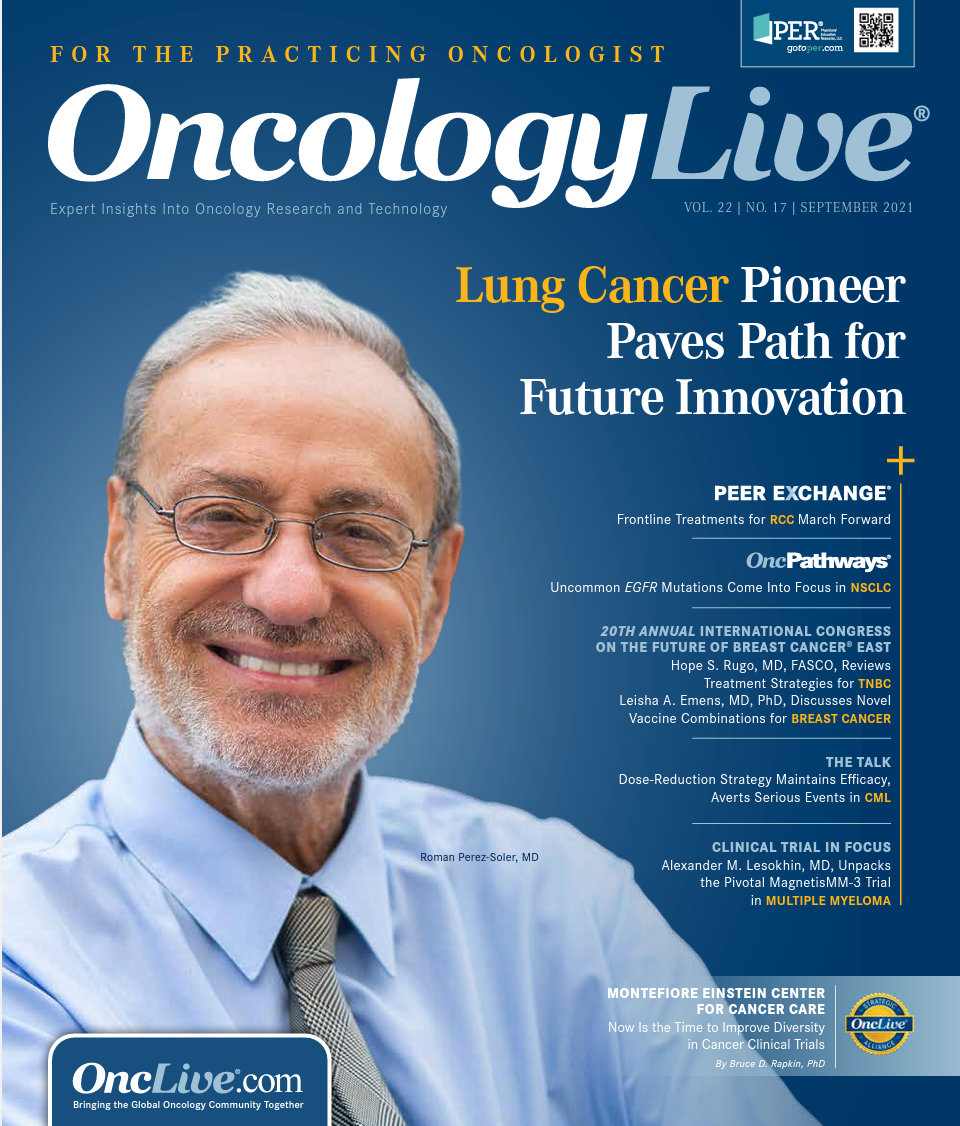Publication
Article
Untangling Fact From Bias in the Age of Social Media and Mistrust
Author(s):
It is difficult to overstate the confusion associated with our nation’s messaging regarding a well-considered, rational, and scientifically based public health–focused approach to the current and future ramifications of the COVID-19 pandemic.
Maurie Markman, MD

It is difficult to overstate the confusion—one might even use the term chaos— associated with our nation’s messaging regarding a well-considered, rational, and scientifically based public health–focused approach to the current and future ramifications of the COVID-19 pandemic.
Concerns range from the effect of the delta variant on schools safely reopening for critical in-person learning,1,2 to the risk of infection and serious illness among fully vaccinated individuals, to the need for COVID-19 vaccine booster shots.3 There also is great concern about continued negative economic effects on small businesses, which have been seriously affected by the pandemic and the possibility of a new round of partial or complete lockdowns. Results of a recent survey of small business owners emphasized the magnitude of the issues confronting these establishments.4
Many pandemic-related issues have yet to be resolved, such as determining the potential role of vaccination for children younger than 12 years and examining the economic effect of deferred rental payments and possible evictions.5 Others may become topics of controversy— for example, the potential for multiple legal challenges regarding vaccine mandates,6,7 the determination of what is an acceptable COVID-19 vaccine (ie, Chinese or Russian vaccine products) for future travel into the United States, and how to address the increasing availability of fake COVID-19 vaccination certificates.
We must add to this list ongoing governmental public health agency “missteps” or seriously inadequate communication regarding their decision-making processes related to the pandemic. These include the apparently unclear (and perhaps even bewildering) lack of urgency related to the FDA providing full approval, not solely emergency use authorizations, to all of the several remarkably safe and effective COVID-19 vaccines. Do the problems stem from inadequate numbers of personnel to complete the required review in a timely manner, or are we dealing with a seriously out-of-date and out-of-touch governmental bureaucracy? In the opinion of this commentator, whatever the explanation, the current state of affairs does little to instill any level of confidence among our citizens in the critically essential federal efforts to protect our health and welfare.
The situation has not been helped by the open debate among the scientific community, governmental public health authorities, and COVID-19 vaccine manufacturers about the potential need for booster vaccination and which individuals should receive a booster shot.8,9 One must add to this controversy the World Health Organization’s rather strident pronouncements that vaccine booster shots—beyond the initial 2 doses of the several approved products—should not be offered at the present time so that priority can be given to countries with current limited vaccine availability.9 In addition, confusion regarding governmental public health agency recommendations, particularly by the CDC, about wearing masks—well- considered and appropriately vetted strategies to prevent the spread of the virus—has further added to the lack of trust in these agencies.
Unfortunately, the often disturbingly ineffective and clearly ongoing messaging difficulties experienced by the scientific and public health communities have permitted individuals, small groups, and rogue governments to spread inaccurate statements largely uncontested through almost completely unregulated social media platforms. These include misleading information or lies regarding COVID-19, vaccine products, and nonvaccine-related control efforts.10 Space does not permit a formal discussion of remarkably outlandish claims made regarding the origin of the pandemic and falsehoods regarding the potential adverse effects of lifesaving vaccines.10
The concern being expressed in this commentary is for the diminishing ability of governmental agencies to provide an authoritative voice related to the documented effectiveness and safety of critical cancer-associated public health measures vs the destructive effect of current and future posts created by individuals and groups who either unintentionally11 or intentionally spread misinformation.
Unfortunately, this concern is not simply theoretical. A recent peer-reviewed report specifically examined the presence of misinformation or harmful information on Facebook and other social media platforms.12 Two individuals with extensive knowledge of cancer examined popular articles pertaining to 4 common cancers that appeared on social media. They found that 32.5% of posts contained misinformation and 30.5% contained what the investigators considered to be harmful information. In addition, 76.9% of articles that included misinformation also contained harmful information.
Finally, and what should be of serious concern for the entire cancer community, investigators found that the median number of engagements for articles that contained either misinformation or harmful information was greater than for factual articles.12
The final point is a simple question: What are the cancer community, public health authorities, and governmental regulators going to do about this disturbing situation, now and in the future? The public is waiting for an answer.
References
- Children and COVID-19: state-level data report. American Academy of Pediatrics. Updated August 12, 2021. Accessed August 16, 2021. bit.ly/3smKbWY
- Goldstein D, Mzezewa T. Doubts, anger and anxiety: what it’s like to go to school now. The New York Times. August 15, 2021. Accessed August 16, 2021. nyti.ms/3g7AyXp
- COVID-19 vaccines for moderately to severely immunocompromised people. CDC. Updated August 16, 2021. Accessed August 16, 2021. bit.ly/3jWQtZK
- Simon R. Delta variant drops small-business confidence to lowest level since March. The Wall Street Journal. Updated August 13, 2021. Accessed August 16, 2021. on.wsj.com/3iQ8UzG
- Alabama Association of Realtors v United States Department of Health and Human Services. No 20-cv-3377 (DLF). (DDC 2020).
- State Public Health Officer order of August 11, 2021. State of California. Accessed August 16, 2021. bit.ly/37KvaF0
- Cutter C, Nassauer S, Tita B. COVID-19 vaccine mandates split corporate America. The Wall Street Journal. August 4, 2021. Accessed August 16, 2021. on.wsj.com/3yU6FRI
- Interim statement on COVID-19 vaccine booster doses. World Health Organization. August 10, 2021. Accessed August 16, 2021. bit.ly/37LrQcv
- Pfizer, FDA clash on booster. News at a glance. Science. 2021;373(6552):260-261. doi:10.1126/science.373.6552.260
- Alba D. Virus misinformation spikes as delta cases surge. The New York Times. Updated August 11, 2021. Accessed August 16, 2021. nyti.ms/3me8Xrr
- Nuti SV, Armstrong K. Lay epidemiology and vaccine acceptance. JAMA. 2021;326(4):301-302. doi:10.1001/jama.2021.11130
- Johnson SB, Parsons M, Dorff T, et al. Cancer misinformation and harmful information on Face-book and other social media: a brief report. J Natl Cancer Inst. Published online July 22, 2021. doi:10.1093/jnci/djab141

Latest Conference Coverage

RVU120 Shows Early Promise in R/R Metastatic or Advanced Solid Tumors

The WEE1 Inhibitor APR-1051 Shows Early Safety and Tolerability in Advanced, Mutated Solid Tumors

TYRA-300 Is Safe, Generates Preliminary Antitumor Activity in FGFR3+ Metastatic Urothelial Cancer

Experts Highlight Noteworthy Research From the 2024 ESMO Congress
2 Commerce Drive
Cranbury, NJ 08512





